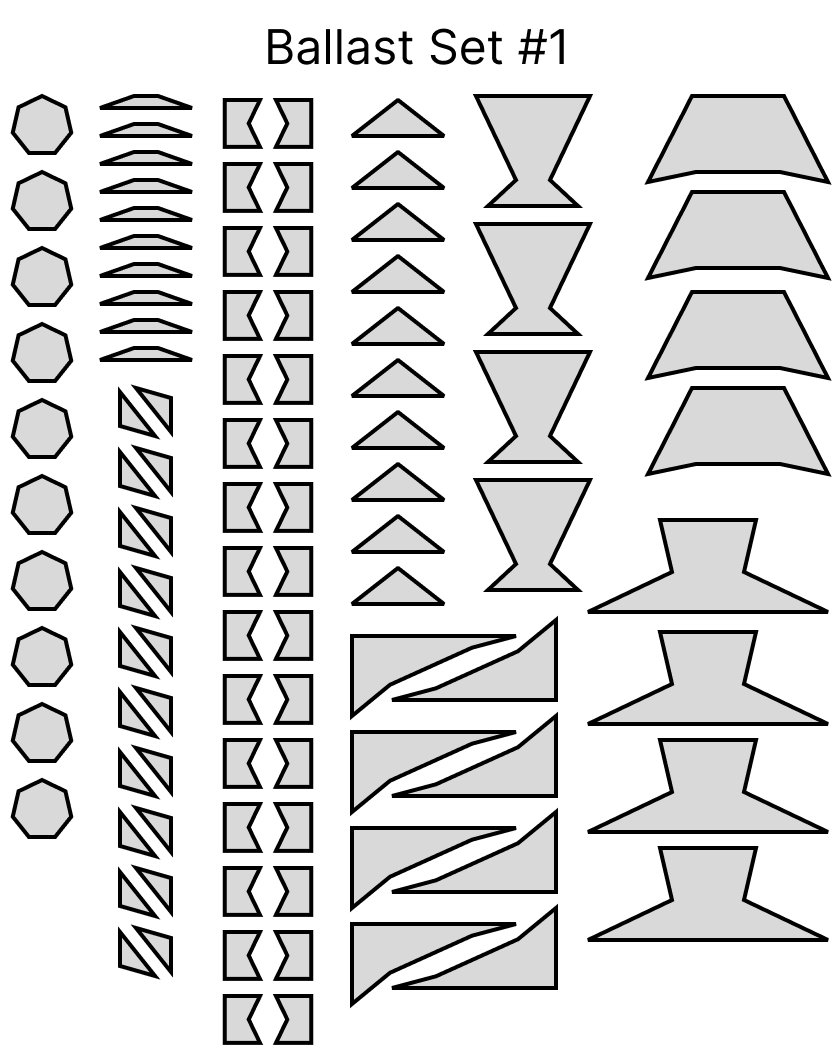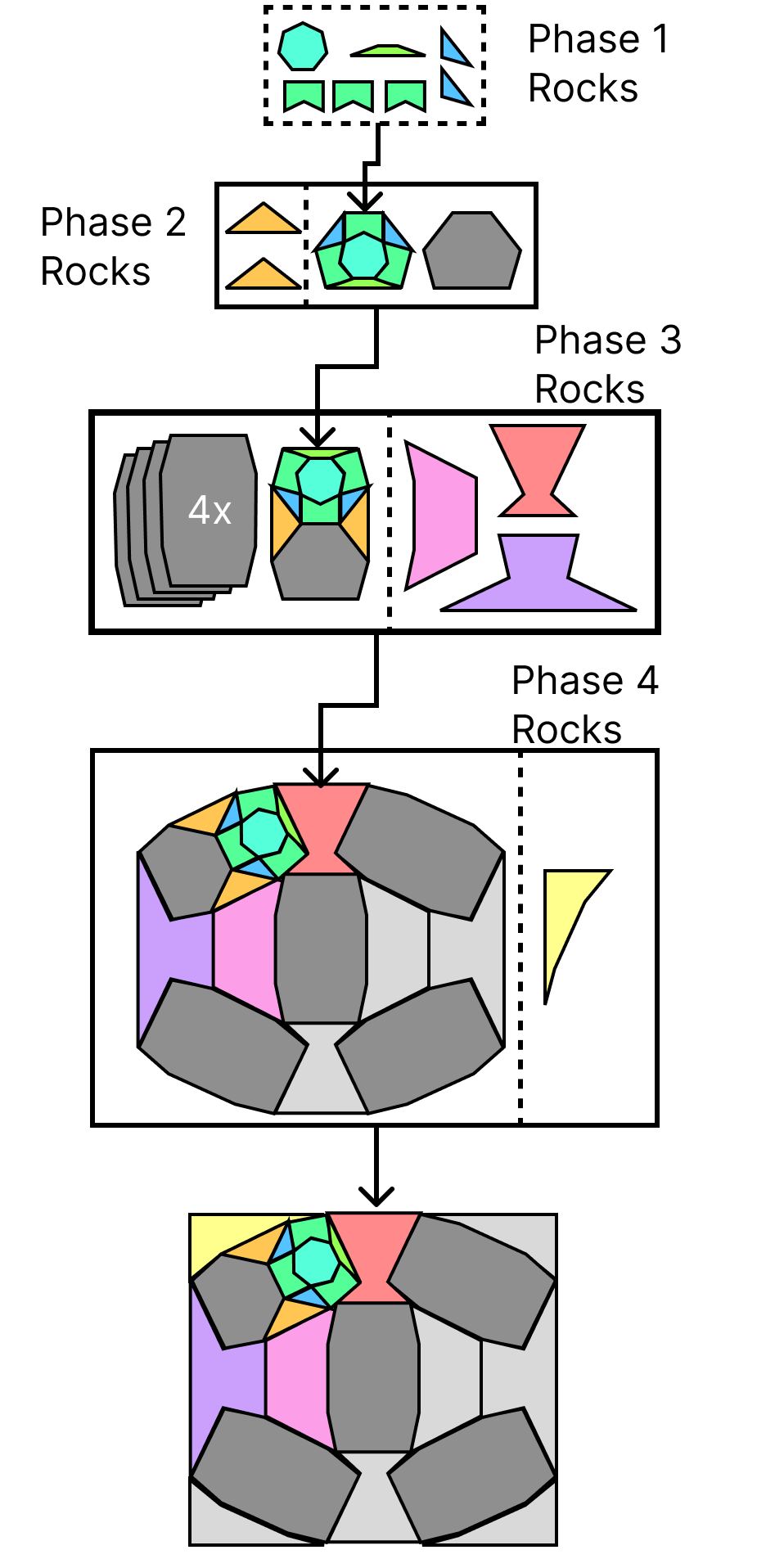Description
'Marshlands ballast' is the name of both a mixture of crushed rocks, and a process sometimes referred to as marshlands
ballasting. In essence, the method does two things: first, it creates a dry, stable strip of land upon which a road can be paved; second, it prevents the future destabilization of the strip and the road by passive regulation.
Mixture
The mixture is made of an assortment of rocks of varying size and shape, that are then mixed in a special cement. The mixture is left to harden inside specially shaped molds to create the ballast. There are several standardized sets of molds, each having between 5 to 30 shapes; on average, a meter of road requires fifty filled sets.
The precise process and composition of the concrete is kept in secret by
House Carré; under anaerobic conditions it becomes extremely water absorbent, and when saturated it becomes self-adhesive. The shapes of the molds of each set are designed to maximize surface area contact between each other.
The ballast is piled over the damp ground to make a dry bed upon which the road is paved and can be used by travelers. The repeated steps and application of weight on the road perturbs the ballast and causes it to settle, much like how one can pat on a container filled with rocks or powder to make it settle. Though all rocks are ballasted together, they are designed in such a way that they can set in phases; therefore, first phase rocks are shaped in such a way that they become saturated first, followed by second phase rocks, and so on; every variation of shapes at least three phases.



Comments